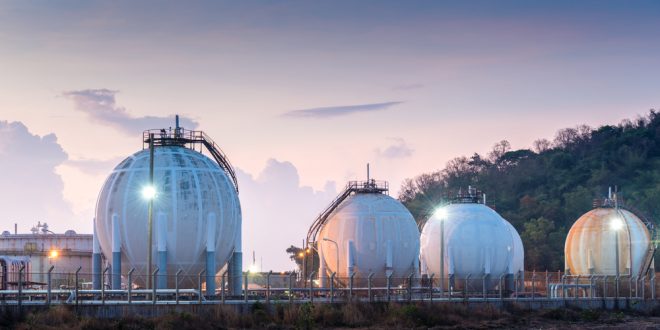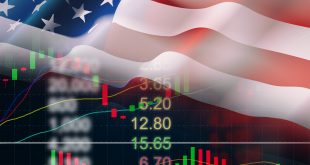Natural gas futures reversed lower on Friday as analysts mulled updated inventory data and as overnight weather modeling dialed back the extent of lingering late-winter cold. After brushing up against the $5/MMBtu mark Thursday, the April Nymex contract was down 8.1 cents to $4.909/MMBtu earlier trading, and further retreated at the time of writing to 4.818, down by -3.45%.
Natural gas prices moved higher on Thursday following the Department of Energy’s inventory report. The weather forecast has changed to show cooler weather in the mid-West.
According to a reports, the weather in the US is expected to be colder than normal all the way to Texas from Chicago in the United States for the next 6-10 and 8-14 days.
The EIA estimates that inventory withdrawals in February were 627 billion cubic feet and that natural gas inventories ended the month at 1.6 trillion cubic feet . The EIA expects natural gas inventories to fall by about 95 Bcf in March, ending the withdrawal season at about 1.5 Tcf, which would be 10% less than the five-year average for this time of year.
Trading Derivatives carries a high level of risk and traders should only trade with money they can afford to lose. Trading Derivatives may not be suitable for all investors, so please ensure that the risks involved are fully understood.
Technically, natural gas prices consolidated on Thursday. Support is seen near the 10-day moving average at 4.712. Resistance is seen near a downward sloping trend line that comes in near 5.20.
Short-term momentum has turned positive as the fast stochastic generated a crossover buy signal. Medium-term momentum has turned positive.
The MACD (moving average convergence divergence) index is making a crossover buy signal. This scenario occurs when the MACD line (the 12-day moving average minus the 26-day moving average, crosses above the 9-day moving average of the MACD line.
The European Union plans to reduce Russian gas imports by two thirds this year. This will be a hard goal to achieve and could trigger a competitive and costly dash for the fuel when energy prices are already inflicting economic pain.
The European Union’s executive last week published a blueprint to cut EU dependency on Russian gas by two thirds this year and end all Russian fossil fuel imports well before 2030. read more
A more detailed proposal will follow in May. The Commission’s initial plan said by the end of this year, the EU could replace the equivalent of 102 billion cubic metres (bcm) of the total 155 bcm of Russian gas it receives every year.
The bulk of the savings would come from importing more liquefied natural gas (LNG) and gas from alternative pipeline suppliers.
A quicker deployment of the renewable energy the EU plans to expand to curb its carbon emissions and encouraging consumers to save energy would further dent demand. The EU targets exceed what the International Energy Agency (IEA) and analysts estimate is feasible.
Global energy watchdog the IEA says Europe could cut Russian gas imports by 50 bcm this year, or just over 80 bcm if countries switched from gas to burning more high-emitting oil and coal. Jefferies analysts estimate the EU could replace around 65 bcm of Russian gas imports this year.
EU member countries will be unable to simultaneously replenish gas in storage and cut Russian imports this year. The Commission will by April propose rules requiring EU countries to fill gas storage 90% by Oct. 1 every year. EU storage, which is replenished over summer when demand and prices are typically lower, is 26% full.
One of the biggest hurdles to replacing so much gas this year is securing enough LNG. The Commission says around 10 bcm of gas imports could come from alternative pipeline suppliers, while 50 bcm would be LNG. That is equivalent to around 10% of annual global LNG supply.
Obtaining this volume will be difficult: 50 bcm would represent a major additional draw on an already-tight global LNG market and additional demand cannot be met by significant new capacity before the mid-2020s.
The global gas market has been tight for a year, driving prices to record levels. High prices in Europe have attracted supply from elsewhere. US exporters have shipped record volumes of LNG to Europe for three consecutive months, at prices at least 10 times higher than a year ago.

 Noor Trends News, Technical Analysis, Educational Tools and Recommendations
Noor Trends News, Technical Analysis, Educational Tools and Recommendations




